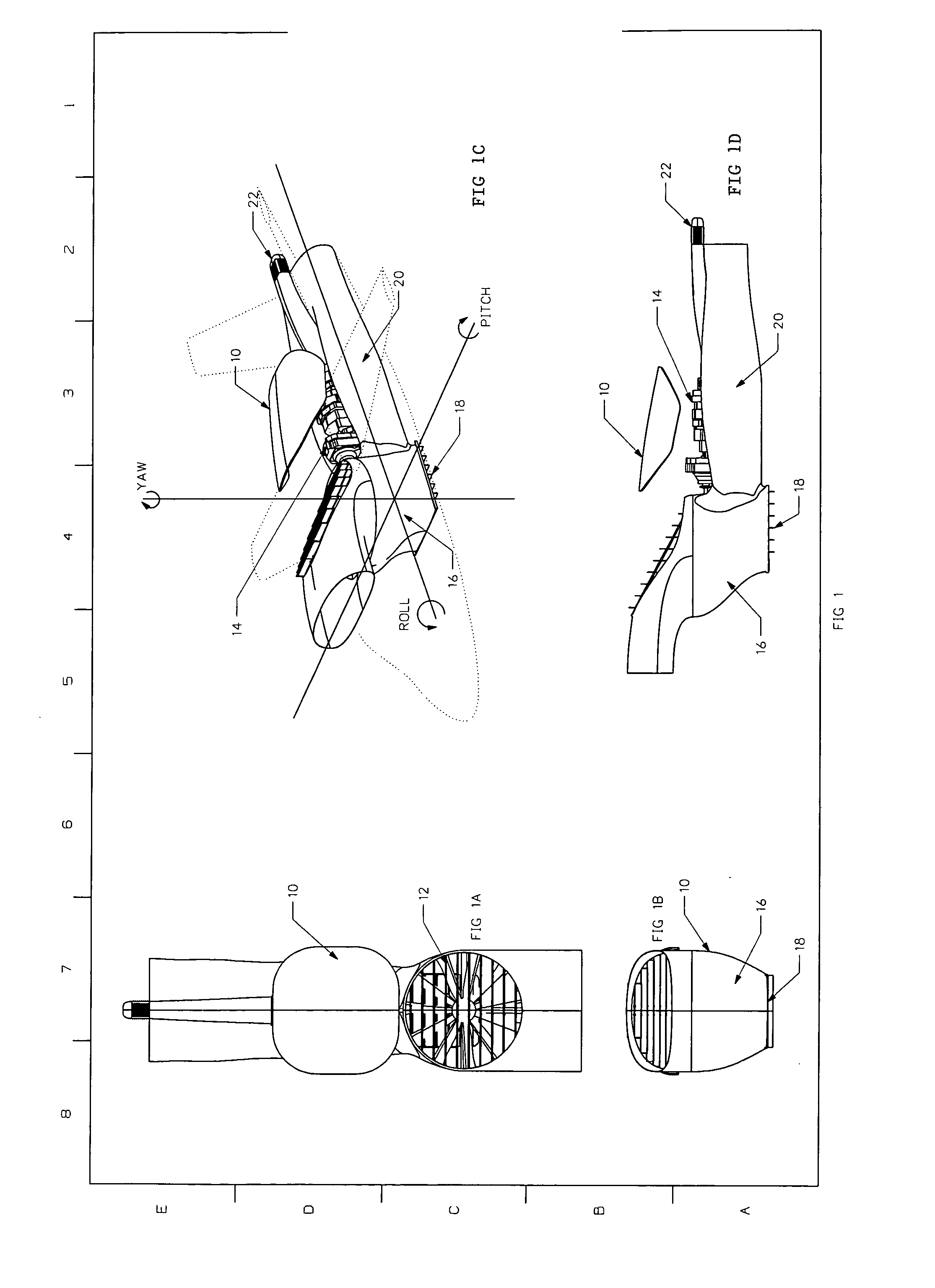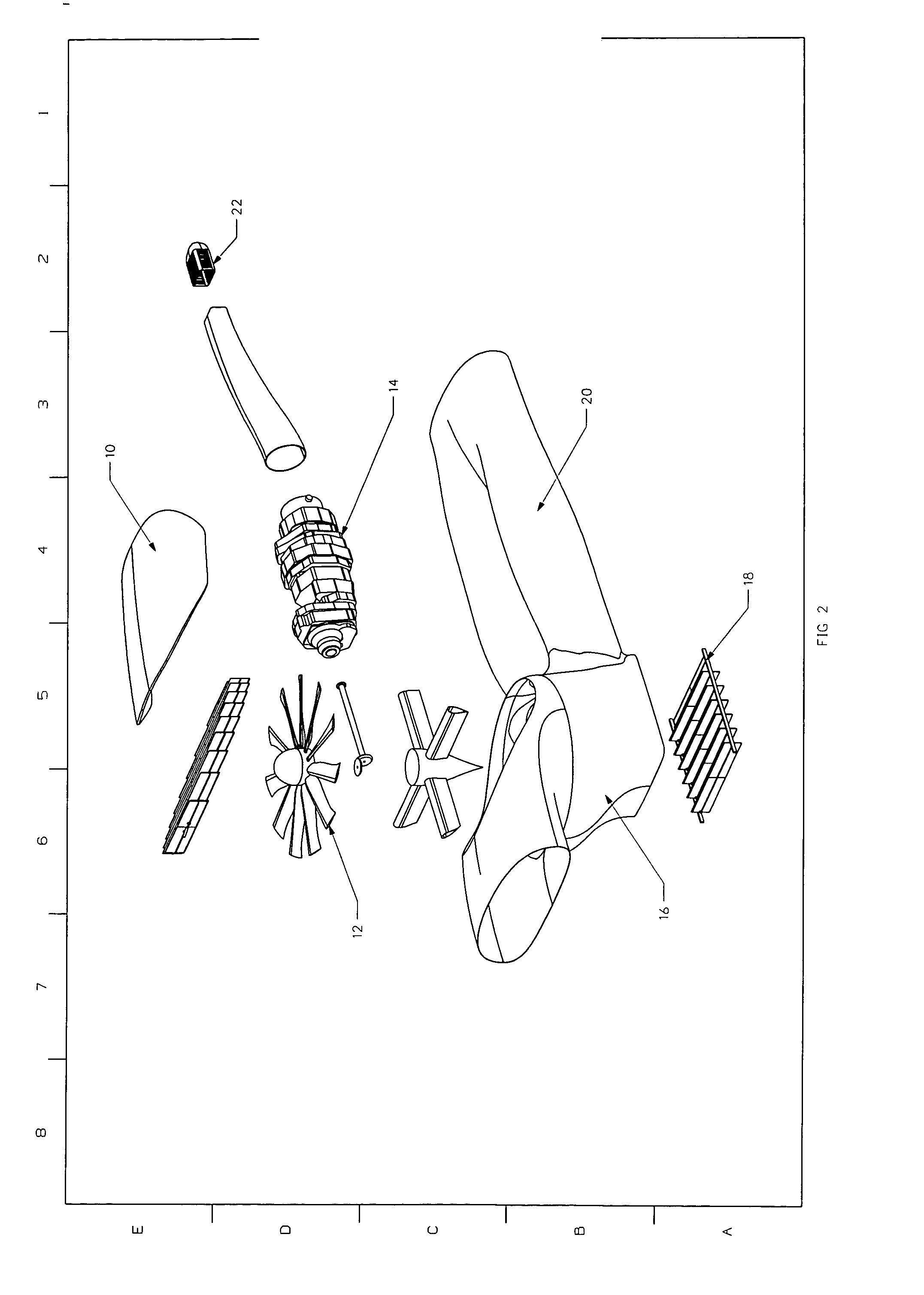Propulsion and attitude control systems for aircraft
- Summary
- Abstract
- Description
- Claims
- Application Information
AI Technical Summary
Problems solved by technology
Method used
Image
Examples
Embodiment Construction
[0035] FIGS. 1 A-D show a preferred embodiment of systems according to one aspect of the invention for propelling and controlling attitude of an aircraft. As shown in these figures, system 10 comprises a fan 12 which is coupled to a propulsion unit 14. The fan is preferably oriented so that it rotates about an axis substantially parallel to the yaw axis of the aircraft. The fan is also preferably but not necessarily located so that its rotational axis contains or is near, or generally aligned with, the aerodynamic center or center of gravity of the aircraft throughout a desirable part of at least the vertical flight envelope. Fan 12 may contain fixed pitch or controllably variable pitch vanes or blades as desired. Fan 12 is preferably coupled to a propulsion unit 14 which may be a high specific energy turbo shaft engine which can be mounted, but need not be, so that its output shaft or turbine shaft is oriented generally parallel to the roll axis of the aircraft. In this manner, thr...
PUM
 Login to View More
Login to View More Abstract
Description
Claims
Application Information
 Login to View More
Login to View More - R&D
- Intellectual Property
- Life Sciences
- Materials
- Tech Scout
- Unparalleled Data Quality
- Higher Quality Content
- 60% Fewer Hallucinations
Browse by: Latest US Patents, China's latest patents, Technical Efficacy Thesaurus, Application Domain, Technology Topic, Popular Technical Reports.
© 2025 PatSnap. All rights reserved.Legal|Privacy policy|Modern Slavery Act Transparency Statement|Sitemap|About US| Contact US: help@patsnap.com



